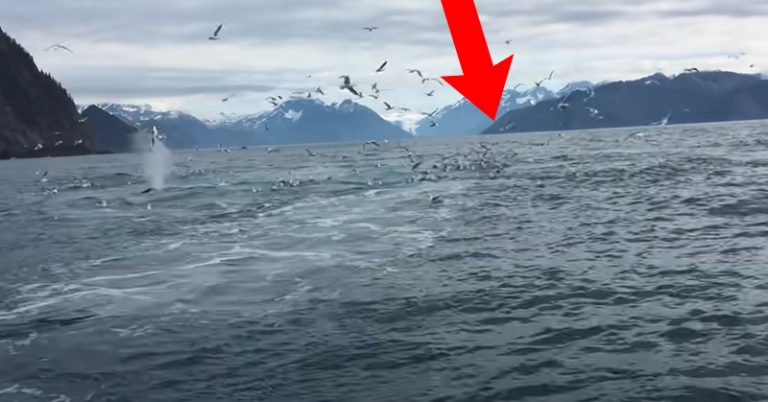In 2015, a man named Brad Rich was out on a boat expedition with his friends off the coast of Seward in Alaska [1]. They were on a mission to film the beautiful seagulls native to the area.
If being in the “right place, at the right time, at the exact moment” ever needed a visual description, this guy’s encounter covers it to the letter. We need an award for people who capture incredible natural phenomena like these to show the rest of the world who aren’t so lucky.
What’s even better than the spectacle? – The raw, stunned, and unfiltered reaction. That’s the sound a person makes when their mind has been blown away.
Well, Brad got more than a bunch of excited seagulls and since his video hit YouTube, it’s amassed over 19 million views and a lot more across other platforms. Be sure to watch the video first before reading the continuing text. You don’t want any spoilers!
Bubble-net feeding phenomena of humpback whales
Brad heard the sound of the whales as they were coming up, slightly rocking their boat as he held his camera steady. At 0:56 seconds, the entrancingly loud pod breached the surface in a wild chase of seagulls and fish. It was a truly remarkable sight for Brad and his friends who couldn’t stop screaming in awe. Even better, the whales decided to swim alongside their boat – probably wondering what all the excitement was about.
The stunning spectacle above is a complex whale behavior known as bubble-net feeding. Whales are some of the most mysterious animals in the sea. They are difficult to understand because they display certain odd behaviors and are highly unpredictable. However, this is also a sign of high intelligence and enhanced adaptation skills.

Most people who take tours to watch humpback whales usually have one interest in common – witnessing the bubble-net ritual. While most species of whales are typically loners who live, move, and feed alone, humpback whales are migratory and prefer to travel in groups. However, under certain circumstances, they may come together to form what is known as a bubble net where a pack of whales simultaneously breach the surface of the ocean to catch tons of unsuspecting prey [2]. This method is also called cooperative feeding and is a tactic employed to fluster and confuse the prey, normally a flock of seabirds or a school of fish. The bubble net can be composed of a minimum of two or three whales and as much as sixty at a time, depending on the strength of the group.
How does it work?
Humpback whales can choose to feed alone or in bubble nets, which is why there’s really no prediction for when it could happen.
Bubble-net feeding is a whirlwind of activity that demonstrates how biologically intelligent cetacean mammals can be. It’s a highly synchronized event led by one whale who dives deep and shoots back up at high speed. On its way up, the lead whale blows air upward to create a mass of bubble and force fish to the surface. The other whales follow closely behind while creating their own bubbles as well. Since one humpback weighs between 25-30 metric tonnes, you can imagine how intense this can be. As they come up, they form a fence around the prey, gulping up as many as possible before the bubble dissipate. The fish can’t handle the noise and only a few – if any – can escape the forceful net.
During the summer, a humpback whale can eat as much as 3000 pounds of fish a day. They feed all through the summer, bulking up so much weight for the rest of the year when they would be focused on breeding in quiet places.
Keep Reading: World’s oldest known wild bird has another chick at age of 70
Sources:
- ‘Guy Filming Seagulls captures an amazing once-in-a-lifetime event instead.’ Elite Readers Dondi. Published January 1, 2016.
- ‘Humpback whales make bubble nets with beauty and precision.‘ Earth Sky. Published January 1, 2016.
- ‘What is bubble net feeding?’ Alaska Collection. Published January 1, 2016.

